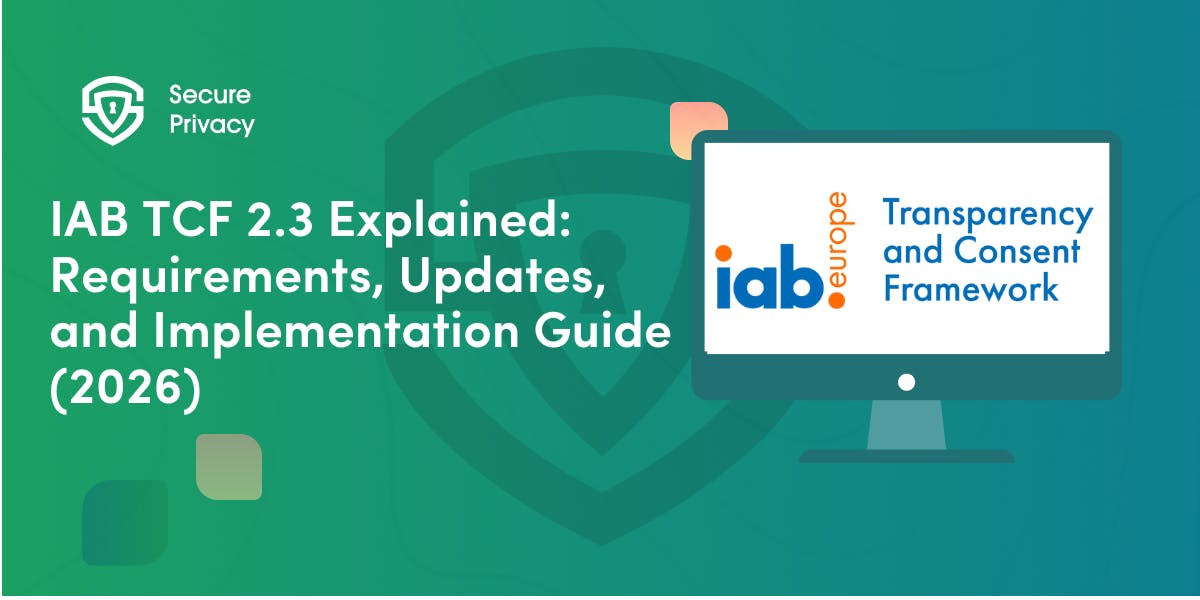Sustainability-Linked Privacy Practices: Integrating Data Protection with Environmental and Social Governance
Is your organization still treating privacy and sustainability as separate domains? The emerging paradigm demonstrates that these priorities can—and should—reinforce each other.
As global attention increasingly focuses on sustainable development, the intersection of privacy practices and environmental, social, and governance (ESG) objectives has emerged as a critical frontier for organizations.
Sustainability-linked privacy practices recognize that responsible data management is not merely a compliance obligation but a strategic imperative that aligns with broader ecological and societal goals.
Is your organization still treating privacy and sustainability as separate domains? The emerging paradigm demonstrates that these priorities can—and should—reinforce each other.
This integrated approach minimizes the environmental footprint of digital infrastructure while safeguarding individual autonomy, fostering trust, and supporting ethical governance frameworks.
The Convergence of Privacy and Sustainability in ESG Frameworks
The relationship between data protection and sustainability is becoming increasingly recognized in corporate strategy and evaluation.
Defining Sustainability-Linked Privacy
Sustainability-linked privacy refers to data protection strategies that explicitly account for environmental and social impacts. This approach moves beyond traditional privacy frameworks by integrating principles such as energy efficiency, reduced electronic waste, and equitable access to information governance.
Consider data minimization—a core tenet of privacy regulations like the GDPR. Beyond protecting individual rights, this practice directly contributes to sustainability by lowering the energy demands of data storage and processing.
When organizations collect only necessary information and delete it after its useful life, they reduce their storage requirements and associated energy consumption.
Similarly, decentralized storage networks reduce reliance on energy-intensive centralized data centers while enhancing data security through distribution. This architectural approach creates a natural alignment between privacy protection and environmental responsibility.
The ESG Imperative for Privacy Practices
Organizations are increasingly evaluated on their ability to harmonize privacy protections with ESG metrics. Poor data governance can exacerbate environmental harms through inefficient data center operations and social inequities through discriminatory algorithms, directly impacting ESG ratings.
Conversely, robust privacy practices that emphasize transparency and user control align with the "Social" component of ESG by building stakeholder trust and accountability. The Data Privacy Framework, which facilitates transatlantic data transfers while maintaining GDPR-equivalent protections, exemplifies how governance structures can bridge privacy and sustainability objectives.
This convergence creates both opportunities and obligations for forward-thinking organizations. As investors and consumers increasingly scrutinize ESG performance, privacy practices become not just a matter of compliance but a material factor in organizational valuation and reputation.
Policy Foundations for Sustainable Privacy
The integration of privacy and sustainability is increasingly reflected in policy frameworks at both regulatory and organizational levels.
Regulatory Synergies
Emerging policies are creating synergies between sustainability and privacy mandates. The European Union's Corporate Sustainability Reporting Directive (CSRD) now requires companies to disclose both environmental impacts and data protection measures, recognizing their interdependence.
In Kenya, accounting firms advocate for integrating data privacy into ESG compliance frameworks to mitigate risks ranging from cyberattacks on critical infrastructure to the environmental consequences of electronic waste.
These regulatory shifts underscore that sustainable privacy is not optional but a material factor in organizational resilience.
As reporting requirements evolve, organizations face increasing pressure to demonstrate how their data practices contribute to broader sustainability goals. This convergence of regulatory domains creates efficiency opportunities for compliance teams that can address multiple mandates through integrated approaches.
Standardizing Cross-Domain Metrics
A significant challenge lies in developing standardized metrics that capture the dual impact of privacy practices. Recent white papers propose evaluating:
- Environmental factors like data storage efficiency and renewable energy usage in IT infrastructure.
- Social factors including transparency scores and accessibility of data rights mechanisms.
- Governance factors such as incident response times and audit frequency for data inventories.
Such metrics enable investors to assess how privacy initiatives contribute to broader sustainability targets, creating market incentives for integrated strategies. The development of these cross-domain metrics represents an important frontier in ESG reporting and evaluation.
Technological Innovations at the Nexus
Technology plays a crucial role in enabling the integration of privacy and sustainability objectives.
Green Data Infrastructure
Energy-efficient data centers represent a cornerstone of sustainable privacy. Leading providers now power facilities with 100% renewable energy while implementing liquid cooling systems that reduce electricity consumption by up to 40% compared to traditional air cooling.
These centers also adopt circular economy principles, rigorously sanitizing and recycling hardware to prevent toxic e-waste while ensuring residual data eradication. This dual focus on environmental impact and data security exemplifies how operational practices can advance both objectives simultaneously.
Privacy-Enhancing Technologies (PETs)
Emerging Privacy-Enhancing Technologies demonstrate how technical solutions can advance both privacy and sustainability:
Homomorphic encryption allows data processing without decryption, reducing energy-intensive data transfer needs while maintaining confidentiality.
Federated learning trains AI models across decentralized devices, minimizing centralized data storage requirements and associated energy costs.
Zero-knowledge proofs enable identity verification without disclosing underlying personal data, curtailing redundant data collection.
These technologies exemplify the potential for innovation to resolve the apparent tension between digital security and environmental stewardship. By designing with both privacy and sustainability in mind, developers can create solutions that advance multiple organizational objectives.
Organizational Implementation Strategies
Implementing sustainability-linked privacy requires systematic approaches that address the entire data lifecycle and engage all stakeholders.
Lifecycle Data Management
Sustainable privacy requires reimagining data workflows through an ESG lens, with specific considerations at each phase:
Collection Phase
At the point of data collection, organizations should implement strict data minimization protocols aligned with sustainability targets. By gathering only what's necessary, companies reduce both privacy risks and resource requirements.
Privacy-preserving data collection methods like differential privacy can reduce dataset sizes while maintaining analytical utility. These techniques add carefully calibrated noise to data, protecting individual records while preserving statistical patterns.
Storage Phase
During the storage phase, migrating to geo-distributed storage architectures powered by renewable energy creates both environmental and security benefits. This approach reduces carbon footprint while making data more resilient against localized disruptions.
Automated data expiration policies that delete obsolete information free storage resources and reduce energy consumption. These policies align perfectly with privacy principles like storage limitation while delivering tangible sustainability benefits.
Processing Phase
When processing data, organizations can optimize algorithms for energy efficiency by using sparse neural networks that require fewer computational resources. This approach delivers privacy benefits by reducing the attack surface while minimizing energy consumption.
Regular carbon audits of machine learning workflows help quantify environmental impact and identify optimization opportunities. These assessments often reveal opportunities to enhance both privacy protection and sustainability.
Disposal Phase
In the final lifecycle stage, partnering with e-waste recyclers certified for data destruction ensures both environmental responsibility and information security. These specialized providers can verify complete data sanitization while maximizing material recovery.
Some organizations are finding creative approaches to repurpose decommissioned hardware for non-sensitive workloads, extending equipment life while ensuring sensitive data remains protected on newer, more secure systems.
Stakeholder Engagement Models
Effective implementation requires collaboration across ecosystems:
- Employees can benefit from gamified training programs that link privacy best practices to sustainability KPIs, making the connection concrete and motivational.
- Suppliers should face contractual requirements for energy-efficient data processing across supply chains, extending sustainable privacy principles throughout the business ecosystem.
- Communities can participate in the design of data governance policies addressing local environmental concerns, ensuring solutions reflect diverse perspectives and needs.
By engaging these varied stakeholders, organizations can develop more robust approaches that account for different priorities and concerns.
Challenges and Critical Considerations
Despite the potential benefits, organizations face several significant challenges in implementing sustainability-linked privacy.
The Efficiency-Security Paradox
While data minimization reduces energy use, over-aggressive deletion policies may compromise fraud detection or climate modeling capabilities that require large datasets. Organizations must balance these priorities through techniques like synthetic data generation, which creates artificial datasets that preserve analytical utility without containing real personal information.
This approach allows organizations to maintain necessary analytical capabilities while reducing storage requirements and associated environmental impacts. The key lies in determining which data truly needs to be retained in its original form and which can be synthesized or summarized.
Equity in Access
Privacy-enhancing technologies often require significant computational resources, potentially excluding smaller organizations from sustainable privacy benefits. Open-source initiatives aim to democratize access through shared toolkits and standardized implementations.
Without these accessibility efforts, sustainability-linked privacy could become another domain where resource disparities create competitive disadvantages for smaller market participants. Community-driven approaches help ensure these benefits are widely available rather than concentrated among large corporations.
Regulatory Fragmentation
Divergent global standards create compliance complexities. A multinational corporation might face conflicting requirements between the EU's emphasis on individual data rights and certain Asian markets prioritizing national security-oriented data localization.
Harmonization efforts like the Global Cross-Border Privacy Rules framework attempt to bridge these gaps while maintaining sustainability alignment. These initiatives are essential for creating coherent approaches that work across jurisdictional boundaries.
Future Directions and Industry Leadership
Several emerging trends point to exciting future developments in sustainability-linked privacy.
Predictive Privacy Analytics
Advancements in AI enable proactive privacy-sustainability management:
- Machine learning models can predict optimal data retention periods based on environmental impact projections, automatically flagging information for review or deletion when its utility no longer justifies its storage costs.
- Blockchain-based audit trails can track both carbon footprint and data access events, creating transparent, immutable records that demonstrate compliance with both privacy and sustainability commitments.
These predictive capabilities help organizations stay ahead of requirements rather than reacting to problems after they emerge.
Regenerative Privacy Models
Forward-looking organizations are exploring regenerative approaches that create positive environmental impacts through privacy operations:
Data carbon offsets involve investing in reforestation projects proportional to data processing emissions, transforming necessary digital operations into environmental benefits.
Privacy-positive energy initiatives channel savings from efficient data practices into community solar initiatives, creating tangible local benefits from abstract digital improvements.
These approaches move beyond mere harm reduction to create affirmative environmental and social benefits.
Institutional Collaboration
Multi-stakeholder initiatives will drive scale:
- Industry consortia can create shared green data infrastructure pools for SMEs, making sustainable privacy accessible to organizations with limited resources.
- Academic partnerships advance research into technologies like photonic computing for low-energy encryption, developing next-generation solutions that enhance both security and sustainability.
- Government incentives such as tax breaks for organizations achieving dual privacy-sustainability certifications can accelerate adoption and implementation.
These collaborative approaches recognize that no single organization can solve these complex challenges in isolation.
Building a Sustainable Privacy Future
Sustainability-linked privacy practices represent a transformative approach to 21st-century data governance. By aligning encryption protocols with energy efficiency goals, tying data minimization to carbon reduction targets, and embedding equitable access into privacy architectures, organizations can simultaneously advance environmental stewardship and digital rights.
The integration of these domains within ESG frameworks creates powerful synergies—enhancing brand reputation, mitigating systemic risks, and future-proofing operations against escalating regulatory demands. Organizations that recognize these connections position themselves advantageously in markets increasingly concerned with both privacy and sustainability.
As climate urgency intensifies alongside digital transformation, the organizations that thrive will be those recognizing privacy and sustainability not as competing priorities but as mutually reinforcing pillars of ethical innovation.
Through continuous technological advancement, policy advocacy, and cross-sector collaboration, businesses can pioneer privacy practices that leave both data and ecosystems securely preserved for future generations.
The path forward requires breaking down traditional silos between privacy, sustainability, and governance teams to create integrated approaches that serve multiple objectives. Organizations that succeed in this integration will not only meet compliance requirements more efficiently but will also create distinctive market positions based on responsibility and forward-thinking leadership.
Get Started For Free with the
#1 Cookie Consent Platform.
No credit card required

What is Cookie Consent? A Quick 2026-Ready Glance
Your website loads. Cookies track users. But without proper cookie consent, you're violating GDPR — risking fines up to €20 million or 4% of global revenue. Cookie consent is the legally required mechanism by which websites obtain explicit user approval before deploying non-essential tracking technologies. This requirement stems from GDPR Article 4(11) and the ePrivacy Directive, mandating that consent must be freely given, specific, informed, and unambiguous.
- Legal & News

DSAR Tools Explained: Best Software for Automating Privacy Requests
You're drowning in data subject access requests. Manual searches through dozens of systems miss regulatory deadlines and expose organizations to fines starting at $2,500 per violation. The solution? DSAR tools — purpose-built software that automates the entire process of responding to data subject access requests, from intake to delivery.
- Legal & News

IAB TCF 2.3 Explained: Requirements, Updates, and Implementation Guide (2026)
Your ad revenue dropped 40% overnight. Google stopped bidding on your inventory. Your DSP partners flagged your traffic as non-compliant. The culprit? An outdated TCF 2.2 consent string after the February 2026 enforcement deadline.
- Legal & News
- Cookie Consent

